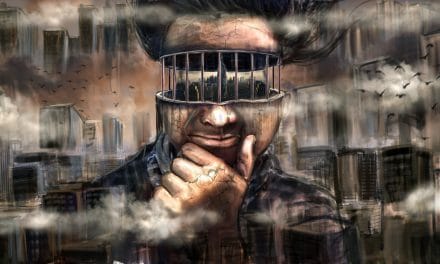The human craving to perceive and comprehend is the driving force behind our development as individuals and, arguably, even our success as a species. We are born with curious minds, which see the multifaceted and multidimensional world around and try to formulate what it observes in terms of relateable aspects. Today, nature is seen to comprise various fundamental entities, from particles and fields to symmetries and energy dynamics. Physics has been premised on the idea of modelling an objective truth with models and theories. The primary factor in the acceptability of a model is not in its mathematical beauty or consistency but rather its power to explain what we see in nature. As Richard Feynman once said,
“It doesn’t matter how beautiful your theory is, it doesn’t matter how smart you are. If it doesn’t agree with experiment, it’s wrong.”
In the Platonic and Neopythagorean schools of philosophy, we find the image of a demiurge as an artisan-like figure responsible for fashioning and maintaining the physical universe. Be it Plato’s Keroplastes (`modeller in wax’) or Empedocles’ Cypris, the pre-eminence of `divine fashioning’ and modelling of the physical universe was entrenched even in early western (particularly Greek) thought. Even in ancient India, modelling of nature was undertaken, with a curious consideration – of the possibility of our inner and outer `cosmos’ being similar, if not same, as seen in the Pauranic words
यद् पिण्डे तद् ब्रह्माण्डे
As in the cell, so in the Universe
While Upanishadic thought made this similarity one of the spiritual dimension, of the essence of a manifested form and being, the principle of self-similarity and fractality was ubiquitous in its occurrence in ancient treatises and seminal works of ancient India, so much so that even the architecture of Hindu temples encapsulate and embody the fractal nature of the Universe. Regardless, the desire and drive to model the Universe in myriad ways has been prevalent the world over, since times immemorial.
Today we have the Standard Model of Physics that incorporates three of the four fundamental forces: strong, weak and electromagnetism, building on a reductionist framework arising out of the smallest known particles, such as quarks and leptons. The holy grail of physics lies in the unification programme, where gravity has been an outlier. What has been pervasive is the redundancy of theories and models on this front, the most visible of which is seen in the varied theories of supergravity. All of them converge and describe physics well in specific regimes and conditions, while diverging in others. For symmetry-variant systems, the unobservability thesis posits that given a family of models of a system which are related by a symmetry transformation, it is impossible to determine empirically which model in fact represents the system. Contemporary quantum field theories have more than just mathematical redundancies in the form of what we know as gauges. A gauge theory is a kind of field theory in which the Lagrangian of the system thereby the dynamics of the system do not change under local transformations as per specific smooth families of operations, which are encapsulated in Lie groups. Curiously, the emergent gauge symmetry from the non-trivial topological character of the configuration space of certain underlying quantum systems can lead to ambiguity in the entropy of the system! It almost seems like nature inherently has certain elusive elements that evade inclusion in our models and thereby cause redundancies and ambiguities in our modelling. As Werner Heisenberg once said,
“Not only is the Universe stranger than we think, it is stranger than we can think.”
Stephen Hawking, by the end of his scientific career, posited that there may be a family of theories that together describe the Universe. M-theory, the successor to String Theory, has looked at a family of string theories that together explain physical phenomena. In 1995, Edward Witten made the surprising suggestion that five superstring theories were in fact just different limiting cases of a single theory in eleven spacetime dimensions. Just like relativity did away with the absoluteness of reference frames to explain space-time transformations, one can posit that while there may be a unified entity or reality at the core of nature, our modelling and theories may never be able to describe it comprehensively. However, the unification programme of Physics has been sided with most scientists, who still remain oriented around the idea that all fundamental forces of nature can be brought under the framework of one theory. Even though string theory is the most mathematically consistent and universal theory of everything that exists today, there are fundamental aspects of the theory, such as supersymmetry, that have not been found experimentally. Regardless of the humbling fact that a sizeable section of the Universe is inaccessible to us and may remain so, the axiomatic assumption that nature is self-similar in an empirically accessible way and can be brought under one mathematical framework may just be a futile exercise.
The difficulty in modelling the reality of the Universe was also exposited, at length, by Indian seers and luminaries, over the ages. Talking of a deified universal reality (Brahman), Sri Ramakrishna Paramhansa once said
“What Brahman is cannot be described. Even he who knows It cannot talk about It.”
The famed theory of errors or Anyathākhyativāda of the Naiyāyikas highlighted the erroneous cognition of humans, while exercising their agency in modelling the Universe. The key question was and is:
Is nature fundamentally indescribable with one unified framework, and only a family of theories with inherent redundancies can be the best we can do, to model the Universe with an inherent sense of erroneous cognition?
There will always be a disparity between what we observe and what we represent it as. Universals were discussed at a great length within the systems of Nyāya and Vaiśeṣika, beginning with Kaṇāda. Traditions that studied the principle of erroneous perception and cognition include the Satkhyati schools such as those of Sri Ramānujacharya, Prabhākara Mimāmsakas, Kumārila Bhatta and Vijñāna-vāda as well as the Asatkhyati schools such as that oriented around Sunyavāda of Nāgārjuna. Key questions pondered on included: What justification do we have for grouping many different things under the same general term? Can we invent an independent term for any perceptible group of things? Should there be a universal rule that everything must belong to a particular group, to which a perceiver can relate it? Is there any entity which is, in some sense, present in all things? Uddyotakara’s Varttika was a seminal work that introduced a fundamental part of Nyaya-Vaisheshika epistemology as we know it: samnikarsa (doctrine of six modes of contact of the senses with their objects). The theory of erroneous perception arose out of a realisation of the misrepresentation of the objects that the senses came in contact with, in all these modes of contact.
In the term Anyathākhyativāda, ‘anyathā’ means `some else from what it is’, while ‘khyati’ refers to false knowledge. Therefore, as per Bhāsya of Vātsayana on Nyāyasutra, this view shows us that the object seen in an illusory or incorrect way is actually a real object that is seen by error as another real object. This could be due to circumstantial reasons or what the Nyāya school of thought called Jñānalaksana Pratyaksa, as per which it is the revival of the idea of one’s past experience of an object that brings in a manner of sense-objects. Indian philosophers discussed properties which could easily be misunderstood as universals, and made a clear distinction between a property that is a `real’ universal and a property that `appears to be’ a universal. Thus, only those properties that are in line with what is accepted in the system as `natural’ classification are treated as real universals. The properties which do not correspond to `natural’ categories are treated as imposed properties (Upadhi). A universal, on the other hand, has to be unitary, simple and unanalysable (Akhanda). The way the Naiyāyikas sifted through erroneous perception, much like the empirical applicability of theories posited by modern scientists, was to fall back upon the pragmatic test of truth: truth has to be that which results in useful activity (Arthakriyā Kāritva) and has inherent `workability’. Simply put, the representation must match the expected state of an object and the characteristics thereof, particularly when acted upon by extraneous conditions.
I would like to conclude this essay by highlighting how it is of prime importance to instil a Naiyāyika way of thinking within the modern psyche with its self-assured efforts towards establishing a theory of everything, and to extend the wisdom thereof to promote a socio-political framework that prioritises truth, nuance and comprehensiveness, without reliance on dogma or exclusivism. When we realise the futility and impossibility of modelling realities of nature and society in a significantly comprehensive manner, we may be more modest and accepting in our approach towards others, not due to pressures of survival, but rather a calm arising out of realisation.
Banner: Parameter Bond
















